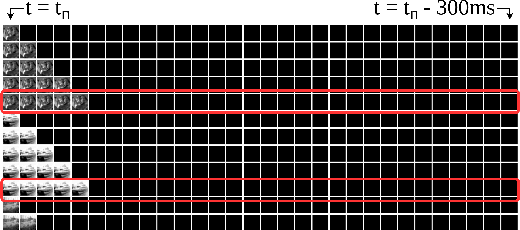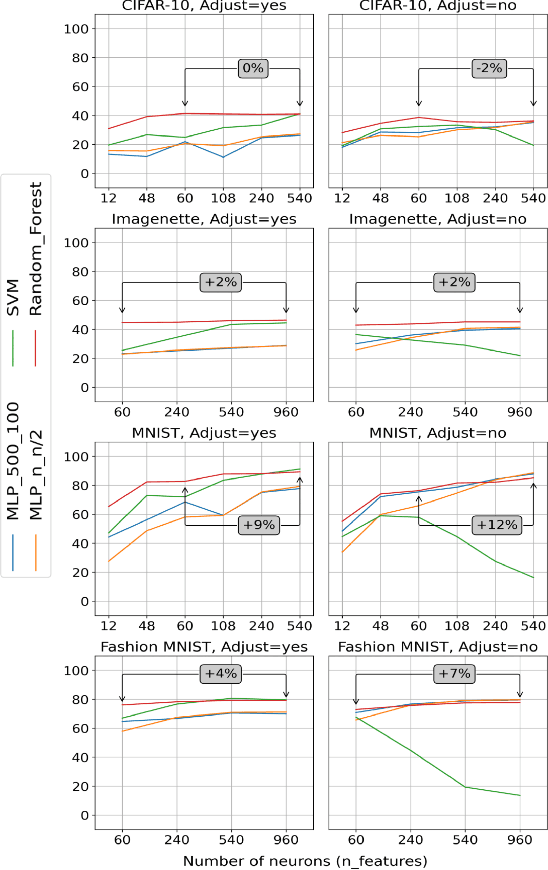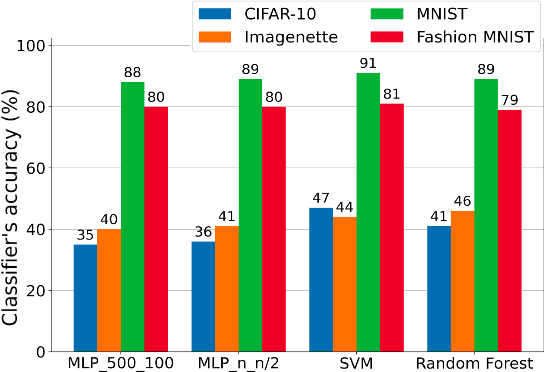Machine Learning Method for Functional Assessment of Retinal Models
Paper and Code
Feb 05, 2022



Challenges in the field of retinal prostheses motivate the development of retinal models to accurately simulate Retinal Ganglion Cells (RGCs) responses. The goal of retinal prostheses is to enable blind individuals to solve complex, reallife visual tasks. In this paper, we introduce the functional assessment (FA) of retinal models, which describes the concept of evaluating the performance of retinal models on visual understanding tasks. We present a machine learning method for FA: we feed traditional machine learning classifiers with RGC responses generated by retinal models, to solve object and digit recognition tasks (CIFAR-10, MNIST, Fashion MNIST, Imagenette). We examined critical FA aspects, including how the performance of FA depends on the task, how to optimally feed RGC responses to the classifiers and how the number of output neurons correlates with the model's accuracy. To increase the number of output neurons, we manipulated input images - by splitting and then feeding them to the retinal model and we found that image splitting does not significantly improve the model's accuracy. We also show that differences in the structure of datasets result in largely divergent performance of the retinal model (MNIST and Fashion MNIST exceeded 80% accuracy, while CIFAR-10 and Imagenette achieved ~40%). Furthermore, retinal models which perform better in standard evaluation, i.e. more accurately predict RGC response, perform better in FA as well. However, unlike standard evaluation, FA results can be straightforwardly interpreted in the context of comparing the quality of visual perception.
 Add to Chrome
Add to Chrome Add to Firefox
Add to Firefox Add to Edge
Add to Edge